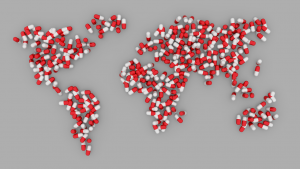
According to the Multinational Comparisons of Health Systems Data, 2018 by the Commonwealth Fund, the United States is one of the most expensive health care systems among the industrialized countries. From 1980-2017, America spent more of its GDP (17.2% adjusted for cost of living) for healthcare spending. In an earlier study, it was found that this did not equate to better care. In fact, the U.S. ranked last in healthcare quality as compared to seven other industrialized countries. This is despite our “treatments,” as the average senior is estimated to be on 15 medications for chronic ailments.
Something isn’t working.
Many wellness experts point out that the major problem in efficacy in healthcare is lack of focus on lifestyle measures and healthy foods. They point to how poor diet and absence of exercise contributes to the “obesity epidemic.” I already debunked this thinking in my previous post and have devoted a whole article series on this form of healthism that is so pervasive in the wellness and integrative medicine community.
In my latest and fifth post, I explore more on why calorie counting and rigid rules with food and diet are not the sole solution to our healthcare problems. In fact, an obsessive focus on them may actually be contributing to the increase in sickness and mental illness in our society.
Read more here.
A Note for Those Struggling with Eating Disorders or Disordered Relationships with Food
I am a Health at Every Size (HAES) practitioner who is dedicated to supporting everyone, regardless of body size or food theory. If you are struggling with a dysfunctional relationship with your body, food, or exercise, please don’t continue to suffer in silence. Reach out for support. I am happy to either assist you myself or help you find the right fit for you. I am currently building up my network of colleagues who can also provide additional nutritional, psychological, and emotional resources.
Visit my website to get essential oils resources and access to exclusive content, delivered right to your inbox.
You can also access my essential oils database and learn more here.
This material is for information purposes only and is not intended to diagnose, treat, or prescribe for any illness. You should check with your doctor regarding implementing any new strategies into your wellness regime. These statements have not been evaluated by the FDA. (Affiliation link.)
Disclaimer: This information is applicable ONLY for therapeutic quality essential oils. This information DOES NOT apply to essential oils that have not been tested for purity and standardized constituents. There is no quality control in the United States, and oils labeled as “100% pure” need only to contain 5% of the actual oil. The rest of the bottle can be filled with fillers and sometimes toxic ingredients that can irritate the skin. The studies are not based solely on a specific brand of an essential oil, unless stated. Please read the full study for more information.




